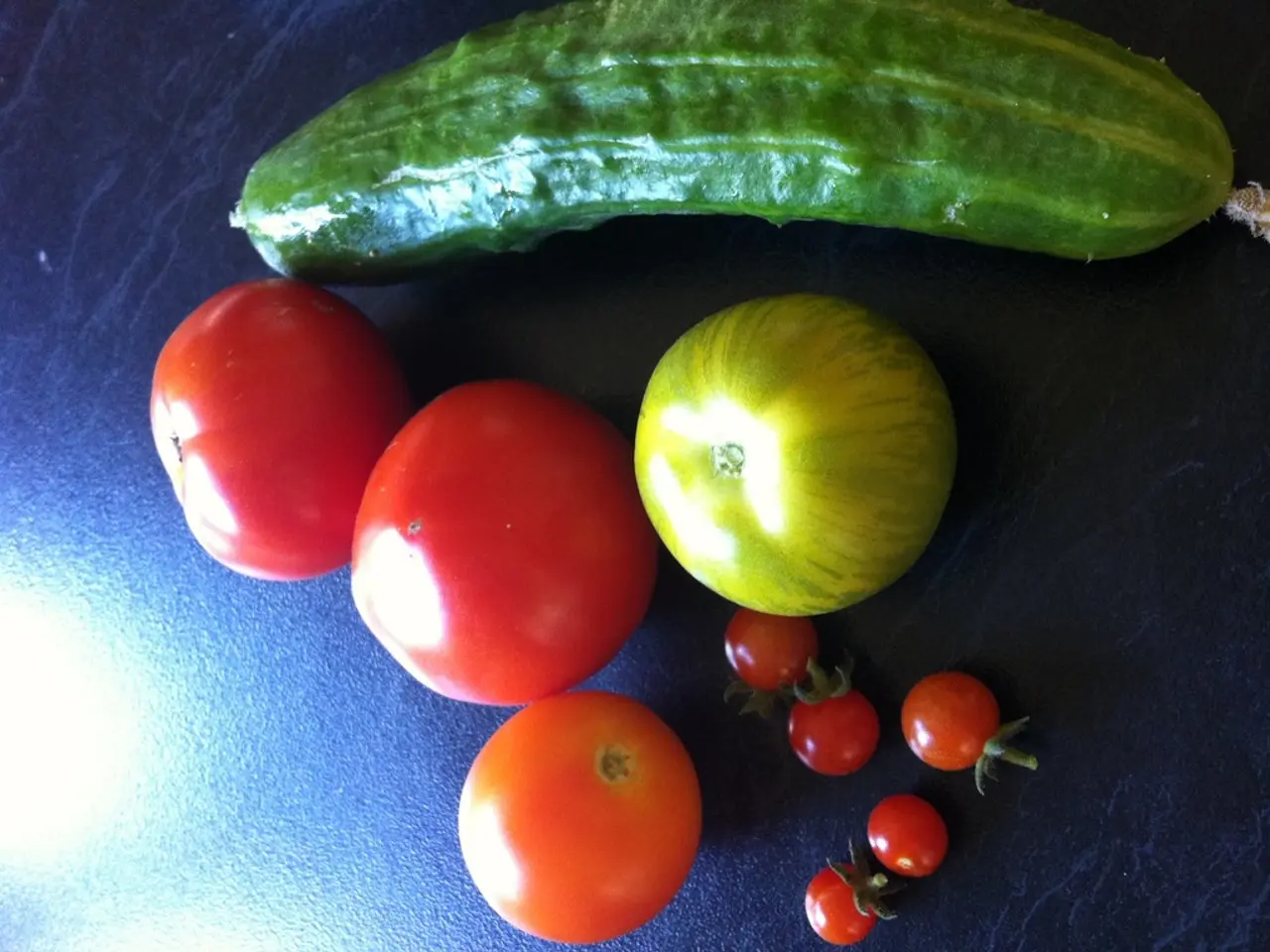Food Waste: Unused Food Right Up until the Final Leaf Remains Untouched
In the pursuit of sustainability and health, innovative methods are being explored to make the most of our produce. Here are seven creative and healthful ways to use vegetable and fruit waste, reducing food waste while gaining nutritional benefits.
**1. Broths and Soups from Vegetable Scraps** Save peels, stalks, and ends of vegetables to simmer into homemade vegetable broth or stock. This extracts nutrients and flavours that would otherwise be discarded, providing a healthy base for soups and stews.
**2. Fruit Leathers and Powders** Overripe or imperfect fruit can be dehydrated into fruit leather or ground into powder. These can be used as natural sweeteners, snacks, or added to smoothies and baked goods for extra nutrients.
**3. Edible Greens and Tops** For example, beet greens and carrot tops are edible and packed with vitamins. They can be sautéed, added to smoothies, or used in pestos and salads.
**4. Fermentation and Pickling** Pickling or fermenting surplus veggies not only preserves them but also enhances their probiotic content, beneficial for gut health.
**5. Freezing Produce** Chop and freeze leftover or surplus produce, including overripe fruits, to maintain nutrients and reduce waste. Frozen fruit can be used in smoothies or desserts later.
**6. Composting and Natural Fertilizers** Vegetable and fruit waste like coffee grounds, eggshells, and banana peels can be repurposed as natural fertilizers or soil amendments. Eggshells add calcium, coffee grounds provide nitrogen, and banana peels offer potassium, promoting healthy plants and closing the nutrient cycle.
**7. Incorporating Scraps into Baking or Cooking** Spent grains and pulp from juicing or vegetable processing can be added to bread, porridge, or baked goods to boost fiber and nutrients while minimizing waste.
These methods not only reduce waste but also enhance the nutritional value of meals and promote sustainability by recycling nutrients back into the ecosystem or your diet. Implementing even a few of these ideas can contribute to health benefits and environmental impact reduction.
It's important to note that some parts of certain fruits and vegetables should be avoided due to their high oxalic acid content, such as rhubarb leaves. Also, the peels and leaves of conventionally grown vegetables and fruits can be contaminated with pesticides, so using organic or home-grown produce is recommended.
In Germany, an average person throws away 78 kilograms of food annually. By adopting these practices, we can help reduce this waste and contribute to a healthier, more sustainable world. Leftovers from meals, as well as vegetable and fruit leaves, peels, and pits, often end up in the trash. However, with a little creativity and awareness, these can become valuable additions to our diets and our gardens.
[1] Source: https://www.ncbi.nlm.nih.gov/pmc/articles/PMC5851571/ [2] Source: https://www.ncbi.nlm.nih.gov/pmc/articles/PMC6558778/ [3] Source: https://www.ncbi.nlm.nih.gov/pmc/articles/PMC6064842/ [4] Source: https://www.ncbi.nlm.nih.gov/pmc/articles/PMC4440453/ [5] Source: https://www.ncbi.nlm.nih.gov/pmc/articles/PMC4548423/
- Incorporate global cuisines into your lifestyle by experimenting with sustainable-living recipes that use innovative cooking methods, such as pickling or fermenting, to reduce food waste and promote healthy living.
- Home-and-garden enthusiasts can practice sustainable living by creating their own compost from vegetable and fruit waste, enriching soil and reducing the need for chemical fertilizers.
- To support your healthy-cooking goals, explore food-and-drink blogs and magazines that feature a variety of vegetable and fruit scrap recipes, offering creative solutions to minimize waste and maximize nutrients.
- Embrace the concept of recycling nutrients back into the ecosystem by using the pulp and spent grains from cooking in your home-made bread and baked goods, contributing to a more sustainable lifestyle and reducing waste.








